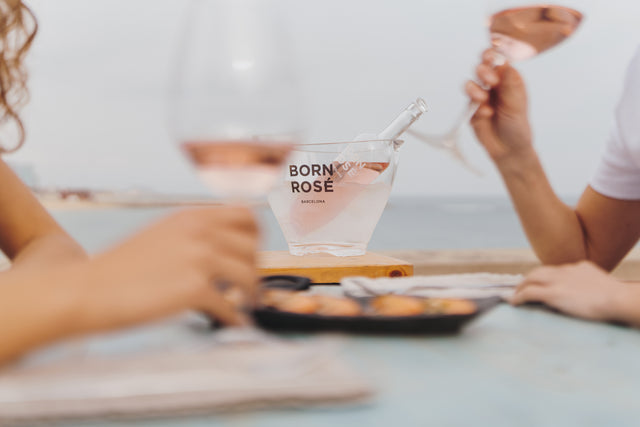Why is rose wine pink?
First of all, let’s start by stating some important facts: rosé wines' pinkish color does not come from mixing white and red wines together. In fact, the process to make rosé is strictly regulated in Europe, and mixing red and white wines is prohibited with the exception of some sparkling wines. Also equally important to know is that rosé wine is made from red grapes and red grapes only, not a mixture of white and red grapes. Well, why is rosé wine pink then? Join us as we discuss some other important facts about rosé, how it is made and where its pink hues come from.
What makes Rosé wine pinkish in color?
Rose´s pink color comes from a maceration process with red grapes. The red grape skins transfer the pink tonalities to the juice, but as opposed to red wines, rosé undergoes a short maceration time from 12-24 hours, and the must is pressed before the juice darkens too much. Another common method of rosé wine production is called the saignée method in which rosé is essentially a byproduct of red wine. In this method, some of the juice is bled off ‘hence the term saignée’ early in the maceration process to make rosé while the remaining concentrated juice is used to make red wine. So, why is rosé wine pink?
Born Rosé Barcelona vintage 2021 is made from 100% organic Tempranillo and Black Grenache grape varieties using limited contact maceration that is carefully controlled to obtain the pale rose-petal color with bluish reflections that make our rosé so distinctive and special.
What Color Should rosé wine be?
You have probably noticed that rosé wine comes in different tonalities. Rosé wine tonalities can range from very pale pink to almost red wine. That is because rosé does not need any specific shade of pink to be called rosé wine. The color given to rosé wine is entirely up to the winemaker and the techniques used to produce it. In this sense, a winemaker may choose different grape varieties and maceration times to get the desired shade of pink. Also, rose pale colors are thought to be of higher quality, but to be fair to the world of rosé out there, this is not necessarily true. In general, lighter color rosés have a dryer taste while darker rosés are sweeter and more full-bodied. You can also expect darker rosés to have a stronger flavor and be richer in tannins due to a longer maceration process.
So, why is rosé wine pink? Now, you are able to answer and make an educated opinion on different rosé wine tonalities. Feel free to visit our online shop and try our organic rosé wine, a special rosé crafted by one of the Penedés masters and made with 100% organic Grenache and Tempranillo grapes. We offer a fast delivery service anywhere in Europe for all our items. Also, follow us on our social networks Instagram, Facebook, and Youtube.

